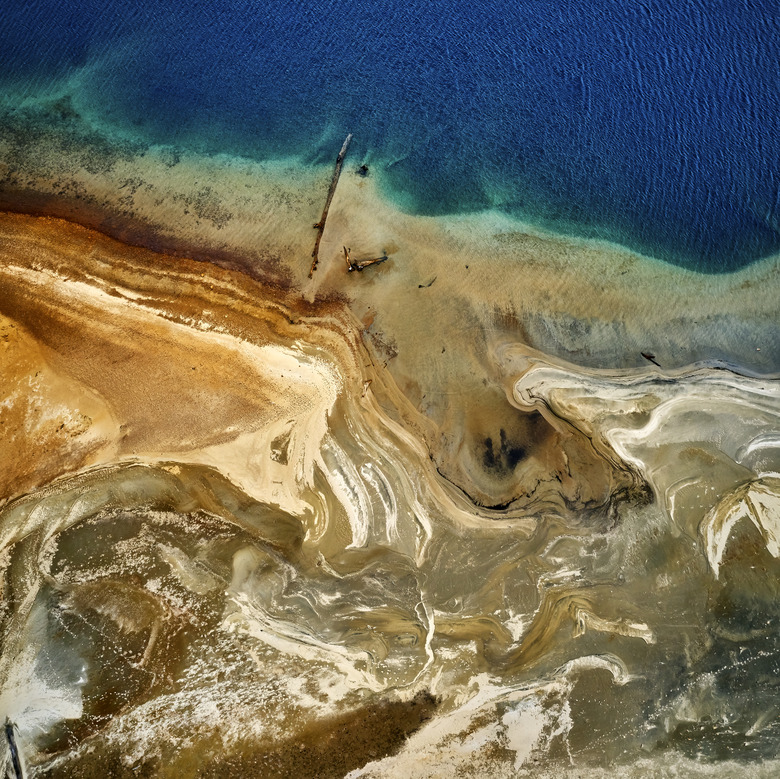A List Of Animals Found In An Estuary
When a river meets the sea, ecological magic happens. An estuary is formed. According to the National Oceanic and Atmospheric Administration, estuaries "provide habitat for over 75 percent of the U.S. commercial sea catch."
Estuaries are important because they are well protected and have less wave action, thereby acting as nurseries for both freshwater and ocean-dependent animals. Tidal influences and the abundance of life also create a wealth of food sources for animals.
The diversity of estuary animals is truly amazing and spans from the smallest plankton to enormous whales!
Plankton
Plankton
What is a plankton? If you have watched SpongeBob SquarePants, you might have heard of these small organisms.
A plankton technically is just an organism that lives in water and that cannot propel themselves. For example, a jellyfish is a plankton.
However, usually plankton are very small and/or microscopic. Two most commonly categories of plankton are zooplankton (animal) and phytoplankton (algae/plant-like protist). Some zooplankton are some of our favorite ocean animals that have just hatched from eggs.
Plankton are a food to many estuary and ocean animals and are at the bottom of the estuary food chain.
Insects
Insects
Insects are also tiny creatures found in estuaries that act as a food source for many other animals.
The dragonfly is one of the best-known estuary insects. Baby dragonflies eat tadpoles, fish eggs and other small aquatic animals. Adults consume voluminous amounts of ants, mosquitoes, butterflies, flies and other flying insects. The damsel fly has a long thin body with a distinctive oblong head, short antennae and bulging eyes.
It consumes other small aquatic insects by capturing them, while flying, with its hind legs covered in prickly hairs.
Fish (Vertebrates)
Fish (Vertebrates)
There are more than 200 species of fish that live in estuary waters. In the Pacific Northwest, salmon migrate through estuaries and upriver to breed and spawn.
The whitebait lay their eggs in estuarine waters. The young fish are swept out to sea and then return swimming upriver where they mature. The Pacific Spiny Lumpsucker spends its time foraging for food on the bottom of estuary waters, eating worms and mollusks.
Other bottomfish, like the starry flounder, spawn in estuaries near river mouths. It feeds on zooplankton, crustaceans, amphipods and copepods, and changes its color to blend in with the bottom to avoid other preying animals. You can find all types of rockfish, hiding out behind and under their favorite habitat... well, you guessed it, rocks.
Estuaries are also known for their abundance of forage fish, like herring and surf smelt, which other larger fish and mammals prey upon.
Echinoderms, Crustaceans and Shellfish (Invertebrates)
Echinoderms, Crustaceans and Shellfish (Invertebrates)
- Echinoderms: One of the most iconic estuary invertebrate you can find in a tide pool estuary is the sea star, which use hundreds of tube feet to capture and move prey to their mouths, located in the center of their body. Sea urchins have spikes and are a favorite snack for otters, but they are also voracious predator themselves, mowing down algae, kelp and other estuary plants.
- Crustaceans: One
of the oldest and well known creatures on Earth is the horseshoe crab. It thrives in soft sand or estuary mud, foraging and eating worms andmollusks. Species of estuary crabs are numerous and include Dungeness, Blue, Graceful and Kelp. Over 80 species of mud shrimp thrive in estuaries. They have10 legs, making them a free-swimming crustacean. They feed on worms,large planktonic organisms, small crustaceans, plant material andsponges. Another crustacean often overlooked in estuaries are barnacles, that stick out their leg-like "cirri" to feed on floating plankton in the water.
- **Shellfish (Molluscs)**: Shellfish are important estuary animals because they act as a buffer, filtering out pollution and other contaminants. Common estuary shellfish include oysters, mussels and clams.
:
Birds
Birds
Marshes and mangroves provide an essential food source for a variety of birds. They feed on fish, plants and snails as it is very easy to hunt and forage in the shallow waters of estuaries.
Ducks hunt in the mud to find food, feeding on shellfish and insect larvae. The great blue heron is a common sight in marshes, agricultural areas and mud flats feeding on fish, small mammals, reptiles and even other birds.
Mammals
Mammals
The river otter feeds on estuary fish, amphibians, crustaceans, snakes, insects, frogs, turtles and any aquatic invertebrates. Harbor seals often bask in the sun on the banks of the water and dive in for herring and salmon. The harbor seal, a cousin of the walrus, spends part of its life in the water but is dependent on estuary land to give birth and raise its young. It preys on estuary fish that include:
- cod
- herring
- sea bass
- shrimp
- mollusks
- whiting
- squid
Cite This Article
MLA
Boone, Dan. "A List Of Animals Found In An Estuary" sciencing.com, https://www.sciencing.com/list-animals-found-estuary-8442977/. 22 November 2019.
APA
Boone, Dan. (2019, November 22). A List Of Animals Found In An Estuary. sciencing.com. Retrieved from https://www.sciencing.com/list-animals-found-estuary-8442977/
Chicago
Boone, Dan. A List Of Animals Found In An Estuary last modified March 24, 2022. https://www.sciencing.com/list-animals-found-estuary-8442977/
